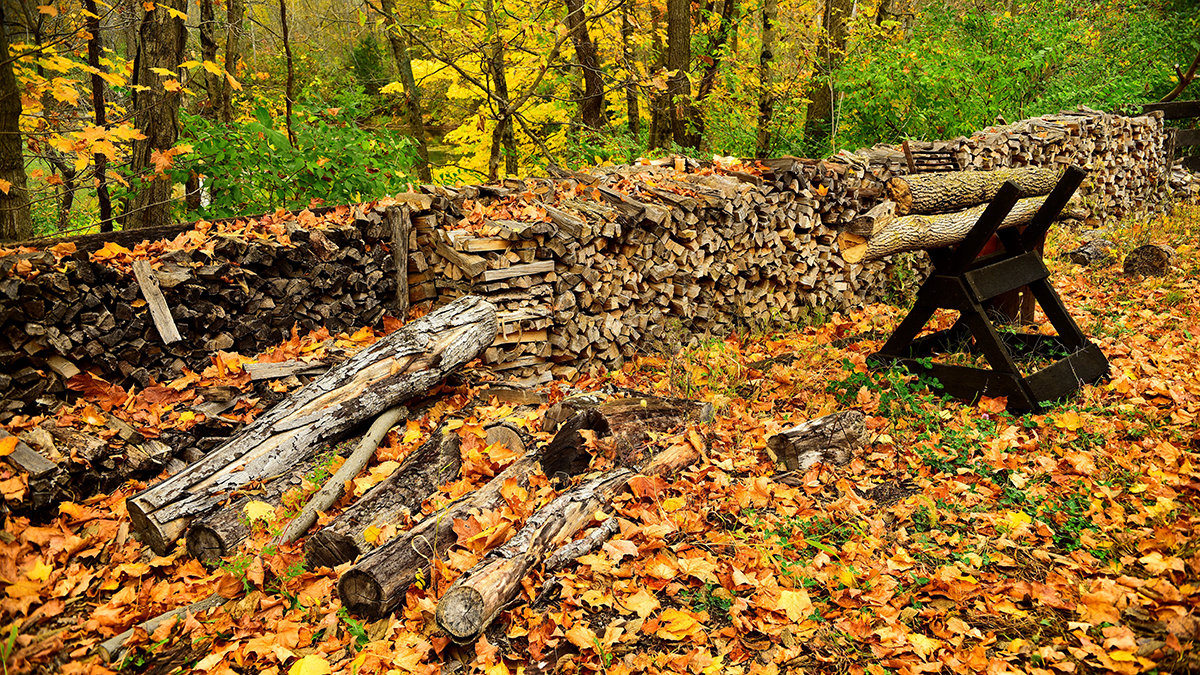ANN CULEK
Program Manager, Slate Run Living Historical Farm
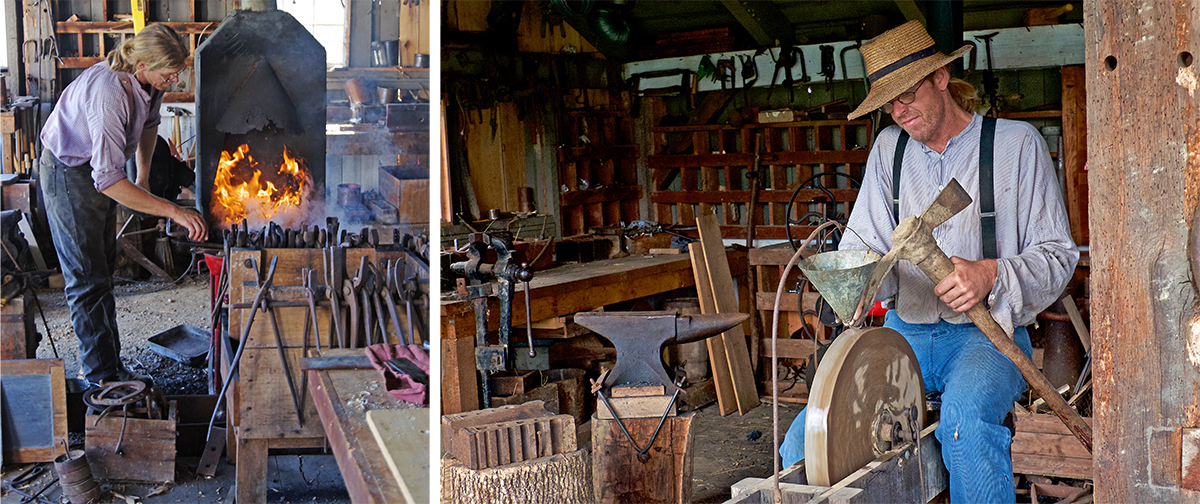
Fall is a beautiful time to visit Slate Run Living Historical Farm, often picturesque and full of activity. On your visit it is easy to miss the real reason behind the rustic corn shocks, colorful pumpkins, and the smell of the wood smoke curling around the kettle of a batch of bubbling apple butter. The real reason is a quest for survival — food, comfort and warmth — for a family and the animals they depend on for their livelihood.
Slate Run Farm compares the choices and decisions a past generation made in the use of the land and resources available to them. The Farm centers on the rural experience of most central Ohioans in the 1880s. They lived on farms where they tended to a variety of crops and animals in order to make a living.
Providing for our families is still an important part of our lives today, but our choices are different. We sometimes forget or fail to see the connections of our daily lifestyles to the production of food and energy. The making of these are removed from our direct contact. Families now, and then, actually share many of the same concerns, but get what they need in far different ways.
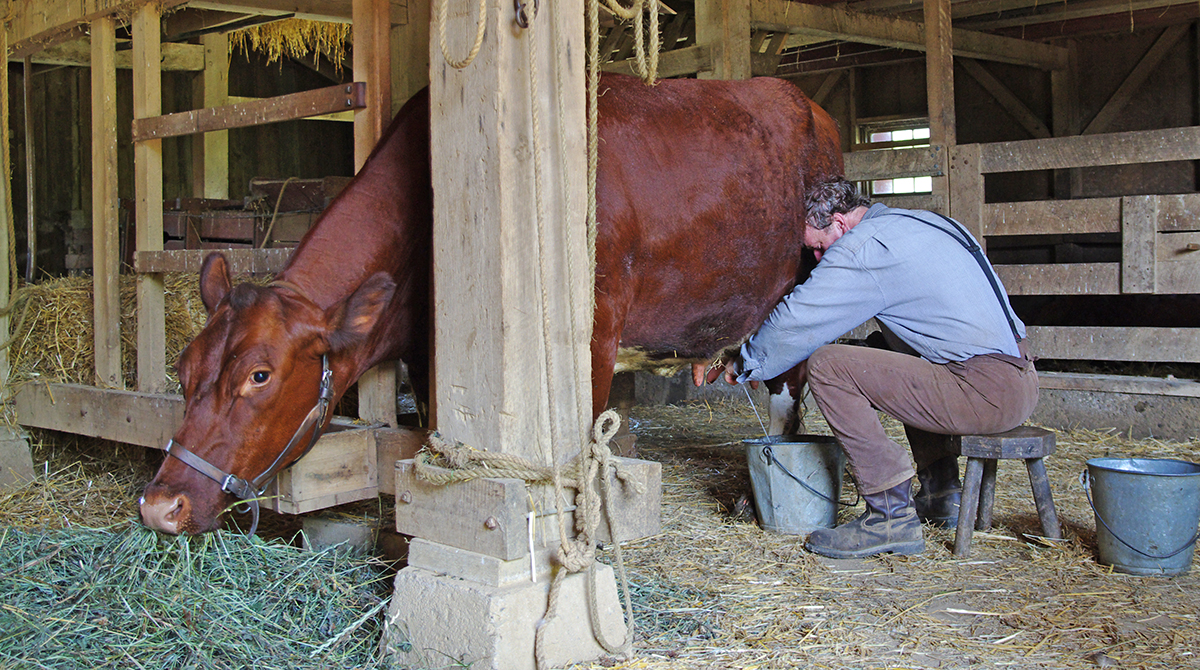
Although no one lives at the Farm anymore the goal of the staff and volunteers is to recreate activities for visitors to observe and sometimes participate in. You can join in one of our programs or stop by anytime during our open hours. There is no admission fee.
During the fall a visit on a brisk day makes one appreciate the warmth of the wood stove. We have moved from the summer kitchen, back into the main farmhouse kitchen, after the hot, muggy months. Its warmth is welcome once again. The animals are growing their winter coats and the barn is well filled with hay. The root cellar is packed with jars of produce. Crocks and bags hold dried fruits and vegetables.
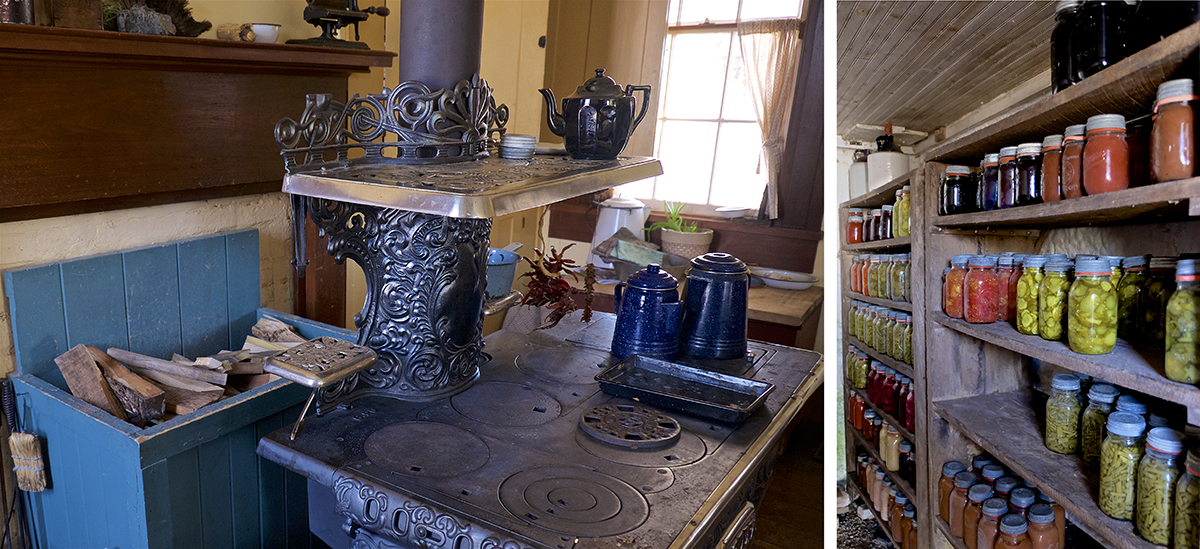
There is a sense of urgency that comes with the cooler weather. It is a reminder that there is little time to finish preparations for the harder months of winter that would challenge an 1880s farm family and the animals that they depended on for their livelihood.
Most fall activities at the Farm tell the final chapters of a story of a year of hard work, and the whims of nature. Hours of work spent planting, hoeing and watering in the garden produce rows of vegetables. The vegetables, only the best, make it into the glass jars that fill the shelves and into the bins lining the root cellar walls. Even a well-stocked root cellar, with its variety of food, will become, after a few months, a menu of monotony when compared to a modern American diet.
All the canned vegetables in the root cellar are boiled, vinegared, salted or sugared to aid in safe preservation. The jarred goods supplement a diet heavy with root vegetables that many modern Americans will not eat. Potatoes and carrots, common on most tables today, are joined by a steady supply of turnips, beets, salsify and rutabagas.
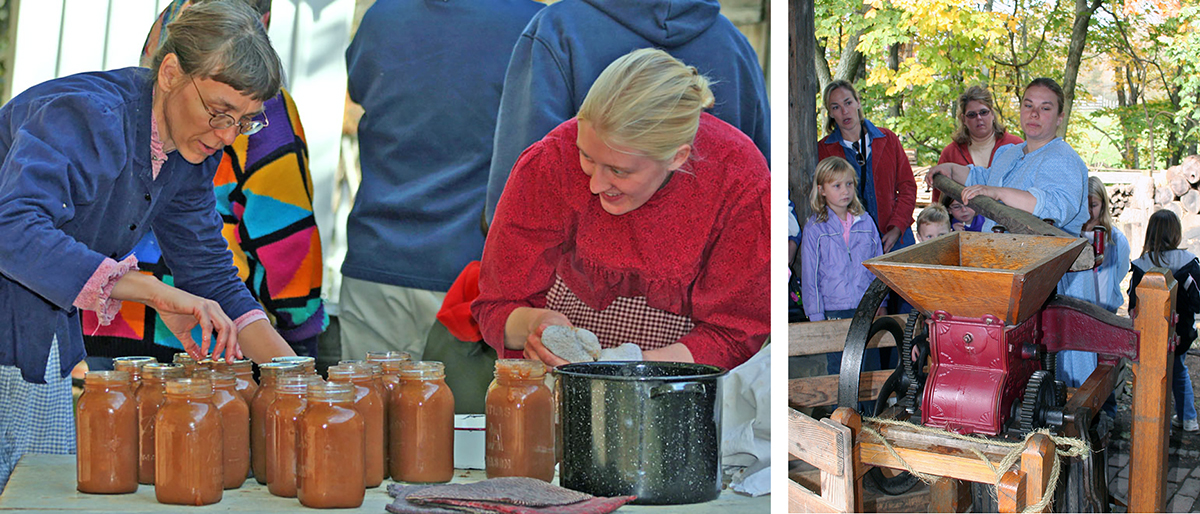
The root crops are removed from the garden and stored before the ground freezes. Many of the root vegetables are put into bins and covered with sawdust, which imitates the growing conditions of the garden and keeps them fresh through the winter and into the spring, until the following year’s vegetables are ready for harvest.
Pit cellaring is another way to store large amounts of root vegetables through the winter, using the natural insulation value of the earth. After the root crops are harvested they are stored in shallow trenches or pits dug into the earth and then covered with a layer of straw and dirt. As vegetables are needed, the pits are uncovered for use.
With the use of artificial refrigeration and faster worldwide transportation, many Americans forget that until recently, many foods were seasonal. To go without a salad or fresh fruits for more than a week, much less from a killing frost in October until April, is hard to imagine. On an 1880s farm the only crunchy, fresh items after the last frost are some apples and cabbage. It was with eager anticipation that the return of spring brought the first fresh greens of dandelions, asparagus and rhubarb.
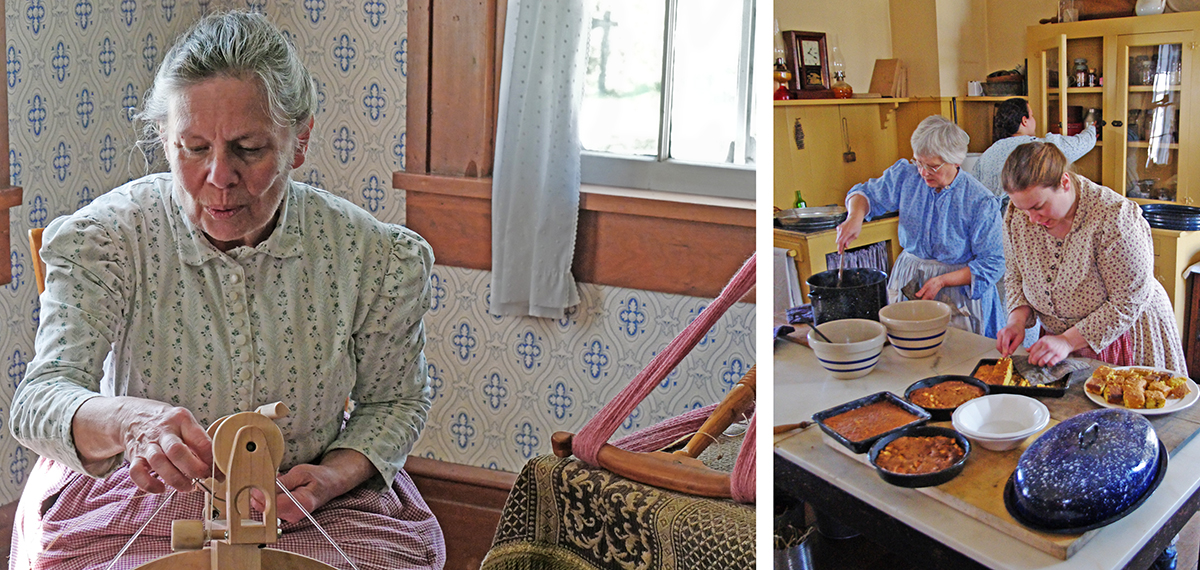
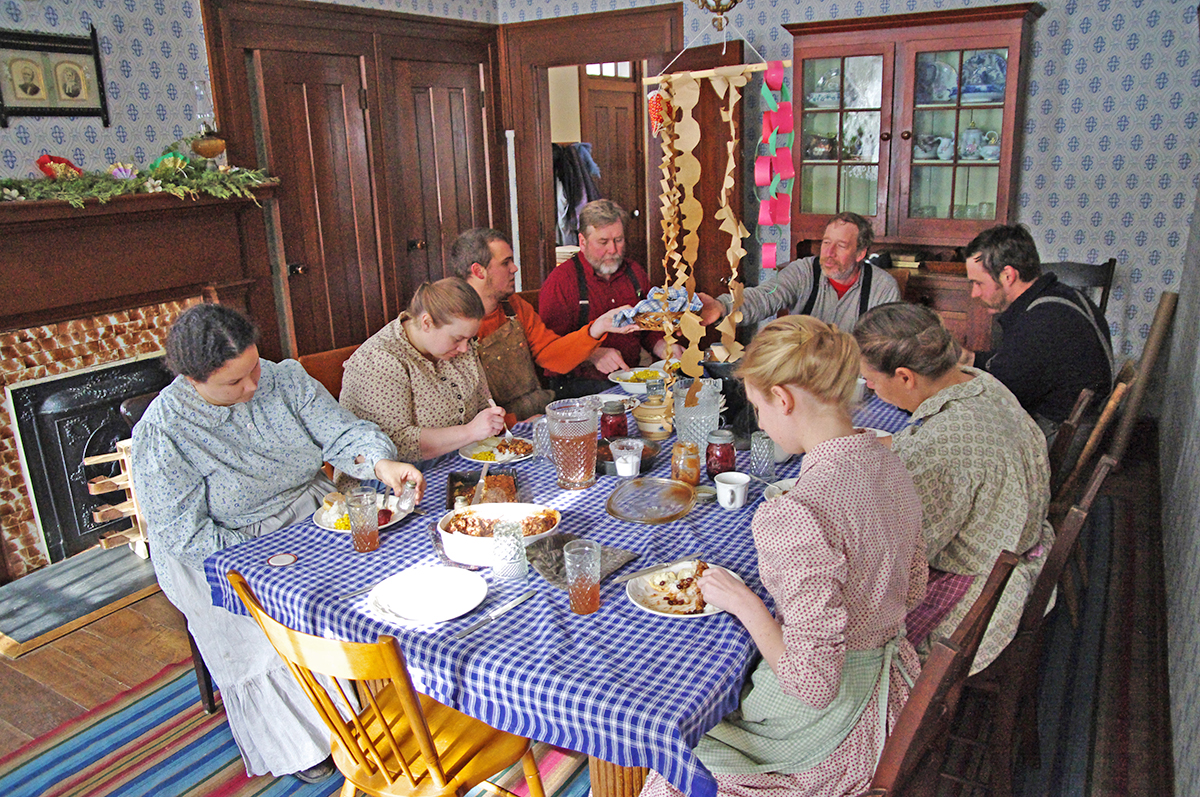
The corn harvest is an important part of the fall season. Originally cultivated in the Americas, corn was a staple in Native American cultures and is essential to our modern life. Native Americans grew it in the rich river bottomlands of Pickaway County that the European settlers coveted. In modern agriculture, the river valleys remain fertile country that produce not only corn, but also wheat and the 20th-century crop of soybeans.
In fall, the full potential of a corn seed is fulfilled as that single kernel forms a stalk with two or three ears of corn on it. Corn provides starch, sugars and oils as well as fuel in the form of ethanol. It was a diverse plant on an 1880s farm.
The kernels were dried, made into hominy and meal, and stored in crocks of salt brine. The granary was filled with ear corn to feed the horses, cows, pigs, sheep and poultry. The stalks shocked, tied up into large teepee like structures, provide animal food for the winter months. The stalks, brought in throughout the winter, are chopped up for feed.
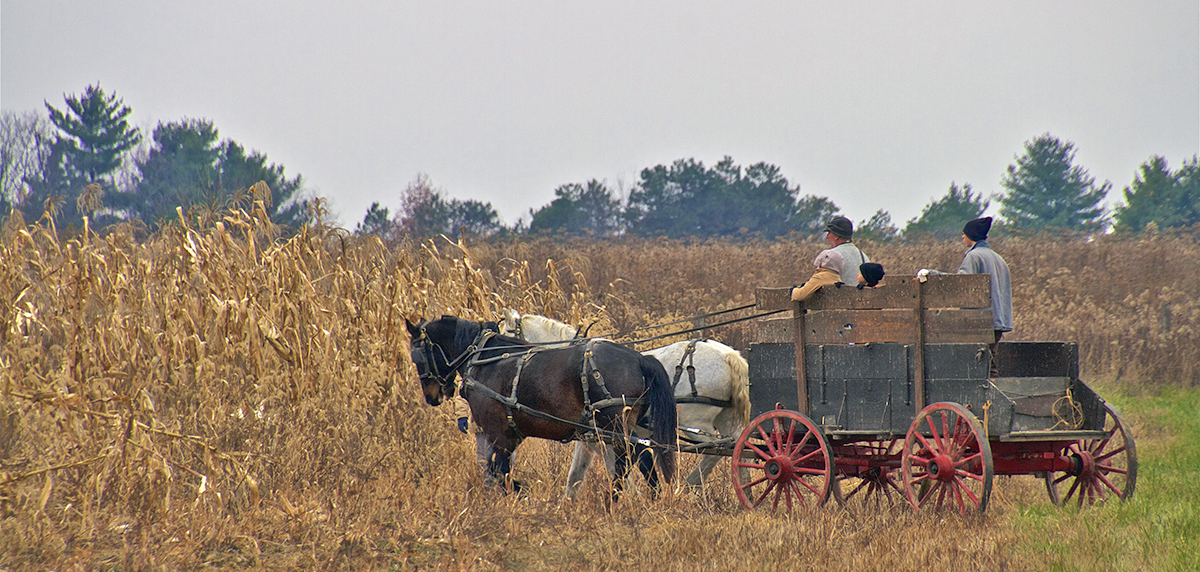
A 19th-century farm grew a variety of not only pumpkins but also winter squash of all shapes and sizes. Nowadays pumpkins are planted for fall decorations and Halloween Jack o lanterns and the occasional pie. Pumpkins, another Native American food source, were important not just as human food, but also for animal feed. In early settlement days a pumpkin’s hard natural shell served as a self-contained storage unit. As long as it didn’t freeze, it was kept for long periods of time. It could also be dried in strips or rings, whereupon even freezing did not harm it. An overnight soak in a pan of water softened it for cooking.
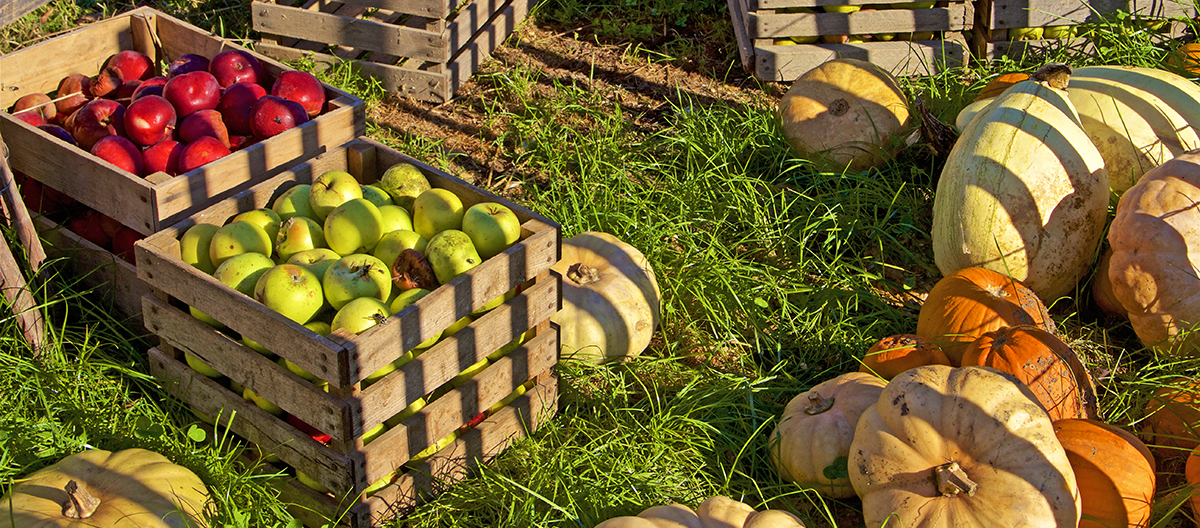
Apples grow well in Ohio. They are versatile and are dried or made into sauce, cider and butter. From about March through July there were no fresh apples in Ohio. The first summer apples were greeted with great delight after months of relying on dried and preserved fruit from the previous year.
Apples are hardly considered a seasonal fruit anymore as they are found anytime in a grocery store. They are shipped from other countries and refrigerated. The number of apple varieties in the 19th century is amazing, in comparison with the relatively few types found in a modern grocery store today.
Different types of apples were kept, as each had a place in the diet. Some matured early in the summer, others cooked down well for sauces and butters. Some had long keeping qualities that enabled them to stay fresh long into the spring in the root cellar. Others were particularly sweet or tart, and their juices were added to favorite cider blends.

Cider traditions came from Europe and early settlers not only used apples as a fresh juice beverage, but also more often made the cider into an alcoholic beverage shared by all ages. By the 1880s a growing temperance movement disapproved of any alcohol, and the attitude towards a once popular beverage for old and young alike was losing favor. The advantage of making the alcoholic or “hard” cider, as it was called, was the ability to store it. In addition, apple juice was made into cider vinegar, an important product in the pickling and preservation of other foods. Any extra apples were carefully selected and packed in barrels to ship to market to provide income for the family.
A naturally occurring farm product was wood. By the 1880s much of Ohio was deforested by generations of settlers clearing land for farms, to provide for industrial purposes and for heating and cooking in their homes. By the late 19th century many city dwellers and factories relied on coal due to the lack of wood. The hiking trails at Slate Run Metro Park follow ravines and creek sides that are not suitable for farming, so more trees remained providing a wood lot for use by the Farm household. A fall job was to make sure a large amount of dry split wood was stacked and ready for the winter to come.
